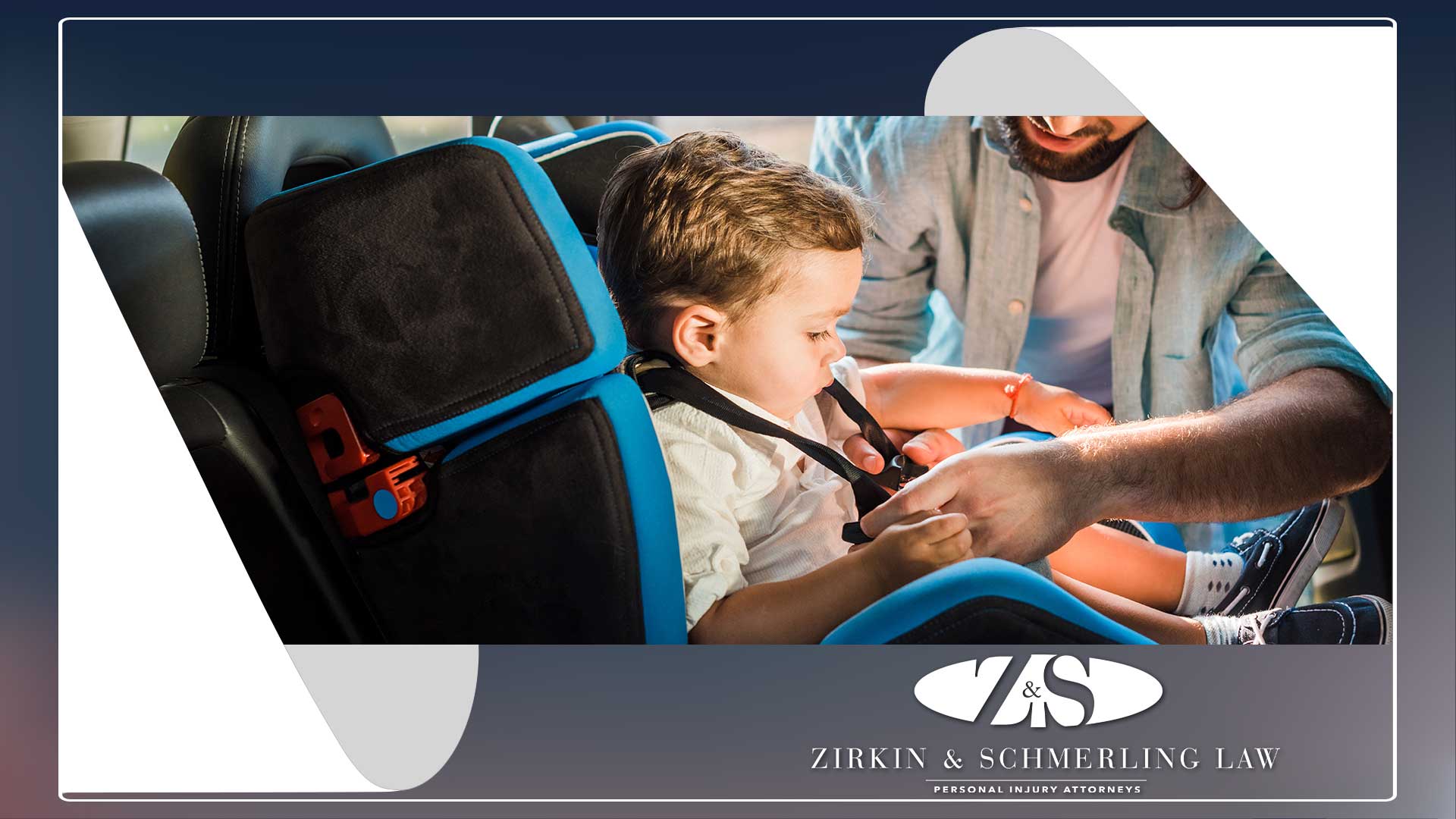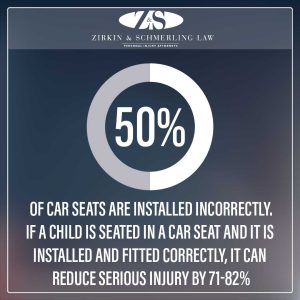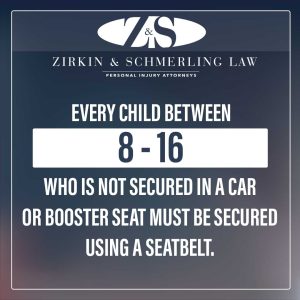
The best car seats are ones that fit your child and are installed correctly. It doesn’t matter how fancy, cute, or expensive the car seat is or if it’s a popular brand or not; what matters is if it’s safe, properly fitted to your child, and correctly installed.

Notably, 50% of car seats are installed incorrectly. However, if a child is seated in a car seat and it is installed and fitted correctly, it can reduce serious injury by 71-82%. Additionally, booster seat usage for older children between the ages of 4 and 8 can reduce the chances of serious injury by 45%.
To ensure the safety of children, Maryland’s government provides education through its Zero Deaths program and also by working with a network of various other Child Passenger Safety partners, such as Kids in Safety Seats (KISS), the National Highway Safety Administration (NHTSA), and Safe Kids – Maryland.
To help you learn about the safest car seats, we have provided information from these partners and more below to answer your questions.
If your child is injured in a Maryland car accident and you need help filing a compensation claim, we can help. Get in touch with our attorneys at Zirkin & Schmerling today for assistance.
Maryland Car Seat Laws
According to Maryland Transportation Code 22-412.2 on Child restraints:

Children under eight years of age must ride in an appropriate child safety seat according to the vehicle and child restraint instructions unless the child is 4’9” or taller. Children must ride in a rear-facing car seat until at least two years old. Every child between the ages of 8 to 16 who is not secured in a car or booster seat must be secured using a seat belt.
These laws apply to the transportation of children in a motor vehicle registered or capable of being registered in the state of Maryland as a Class A (passenger), Class E (truck), or Class M (multipurpose) vehicle. The law also applies to in and out-of-state vehicles.
If you violate these laws, you may face a fine of $50 for a first offense.
Safest Car Seats: FAQs
In general, it is recommended that children ride rear-facing in a car seat for as long as possible and in a convertible car seat until they reach the maximum height or weight limit allowed by the car seat manufacturer. Once a child reaches those limits, placing them in a forward-facing car seat is generally okay until they are ready for a booster seat.
Below are additional FAQs and answers to help you understand the safest car seats.
1. How Do I Know if a Car Seat is Safe?
A car seat is safe if it is installed and fitted correctly. All car seats sold in the US must also comply with the Federal Motor Vehicle Safety Standard No. 213.
The NHTSA offers this website to help you find the right car seat for your child: https://www.nhtsa.gov/campaign/right-seat
To ensure your car seat fits your child correctly, follow these instructions provided by Safe Kids Worldwide: https://www.safekids.org/tip/right-fit-your-childs-car-seat
A fitted 5-point harness will give the best possible protection as it has straps that go over both shoulders, both hips, and buckles at the crotch.
All car seats will come with instructions for installation. However, if you are concerned that you have not installed the seat correctly, there are Certified Child Passenger Safety Technicians available throughout the state that can help you. Use this link for Kids in Safety Seats (KISS) to check for an available tech in your area: https://health.maryland.gov/phpa/oehfp/kiss/Pages/Home.asp
2. How Do Car Seat Safety Ratings Work?
There are no official car seat safety ratings. Instead, what makes a car seat safe is if it complies with Federal Motor Vehicle Safety Regulations, if it is installed correctly according to the manufacturer’s instructions, and if it is fitted correctly to the size of your child. Beyond that, there is no official rating system for car seats. There are only the guidelines and recommendations offered by the NHTSA here.
3. What Are the Top-Rated Safest Car Seats For Infants?
Again, you should generally never buy a car seat simply because it is a popular, top-rated brand. Instead, it is all about making sure it is the right type of seat and is installed correctly based on your child’s age and size.
Infants should be in rear-facing car seats only. The general rule of thumb is that a child should remain in a rear-facing seat until the age of 2 or 3 or until they outgrow the weight and height limit provided by the car seat manufacturer. Many rear-facing seats are designed to accommodate children until they weigh around 40 lbs.
4. What Are the Safest Car Seats For Toddlers?
Toddlers can start riding in forward-facing car seats as early as age two if they meet the height and weight requirements as provided by the car seat manufacturer. However, forward-facing seats are considered a step back in safety, so you should keep your child rear-facing as long as possible. Generally, children can ride in front-facing seats between the ages of 2 and 7.
5. What is the Difference Between a Convertible Car Seat and an Infant Car Seat in Terms of Safety?
There are no official comments on an infant rear-facing seat being safer than a convertible seat. It is all about using the right seat based on your child’s size and weight and following the installation instructions.
A convertible car seat can convert from rear-facing to front-facing when your child is big enough to transition to front-facing. There are even all–in–one seats that convert from rear-facing to front-facing to a booster seat.
A car seat that is only rear-facing is no more or less safe than a convertible car seat. Safety comes from using the right position at the right age and weight or height, as well as ensuring it’s installed and fitted correctly.
Have a Legal Question About the Safest Car Seats and Car Accidents? We Have Answers
If your child was injured in an accident because of your own negligence and failure to install their car seat and secure them properly, you may find it difficult to recover compensation for their injuries. However, if your child was properly secured and still sustained injuries in an accident that was caused by another driver’s negligence, we can help you file a claim against that driver to get the compensation you need to pay for your child’s injuries as well as your own.
At Zirkin & Schmerling Law, we have years of experience helping victims of car accidents, including child victims. Contact us or call us at (410) 753-4611 to set up an appointment with one of our experienced lawyers today.
